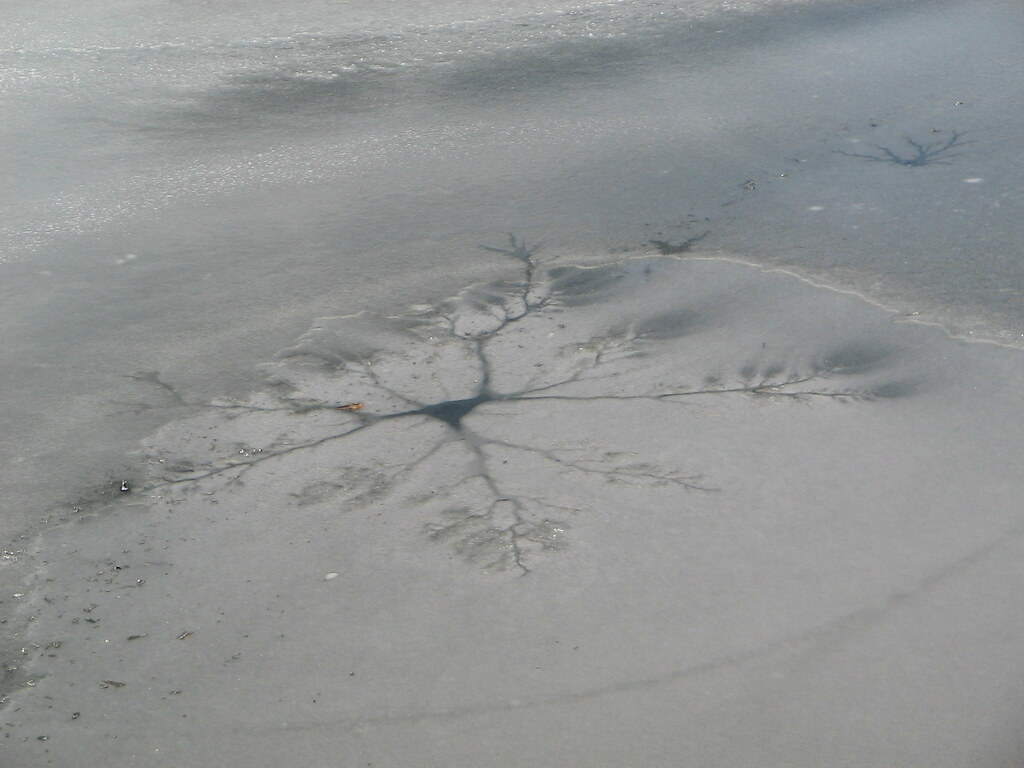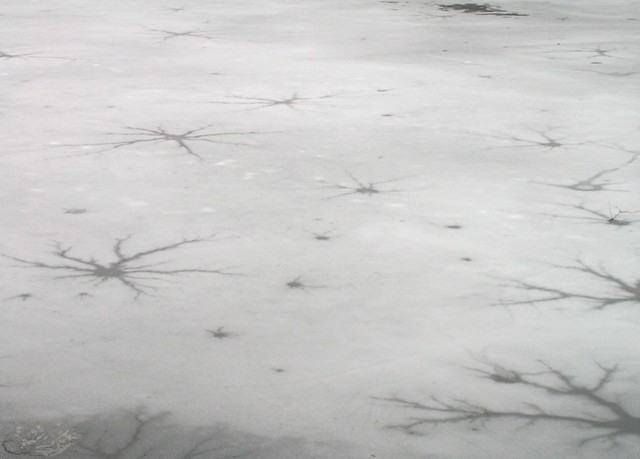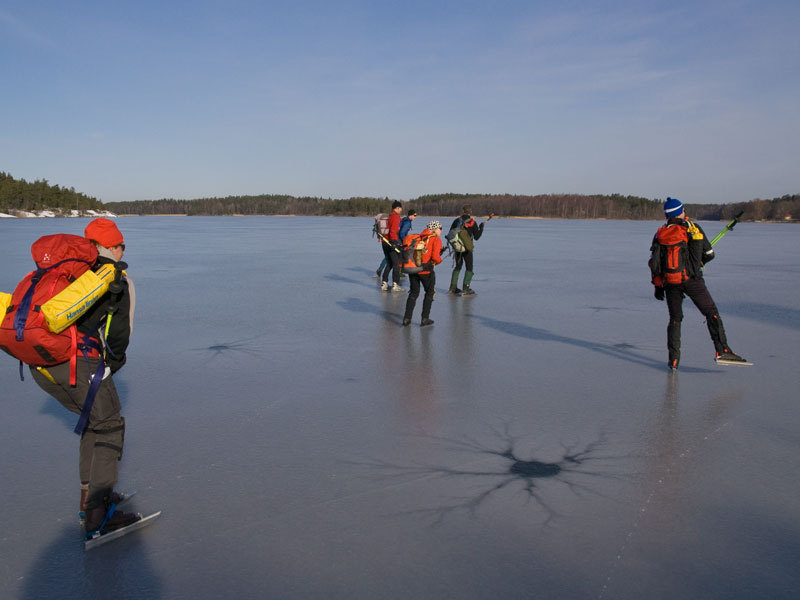"The essence of the Liberal outlook lies not in what opinions are held, but in how they are held: instead of being held dogmatically, they are held tentatively, and with a consciousness that new evidence may at any moment lead to their abandonment. This is the way opinions are held in science ..."
http://en.wikiquote.org/wiki/Bertrand_Russell#Chapter_1:_Philosophy_and_Politics
http://tinyurl.com/cm3fnpp
These words ring as true today as when they were originally penned by philosopher Bertrand Russell circa 1950.
It is incumbent upon scientists of all caliber to hold ideas tentatively rather than dogmatically. When new evidence comes to light, it is incumbent upon the scientist to evaluate the new information to the best of their ability and, where necessary, discard or re-evaluate those ideas upon which the new information may have bearing.
A good scientist must remain open-minded toward new ideas and remain willing to have his outlook changed, should new evidence require it. This may include strengthening one's opinion that an idea is correct or, alternately, certainty may fall by the wayside as plausible alternative explanations come to light.
It is such an alternative line of inquiry that shall be brought up in this entry (though no definitive answers are yet to be had), with respect to the geological features native to the south pole of the planet Mars, affectionately nicknamed "Martian spiders."
A number of hypotheses have been forwarded over the last decade with respect to how they form, including analogies with living systems such as plants (due to similarity to Fibonacci branching seen therein) or Banyan trees (courtesy of speculation by Sir Arthur C. Clarke). Though many such thoughts have not been borne out by more detailed observations.
The current model in vogue in astrogeology circles seems to involve the notion of icy geysers, despite the fact that no such geyser has ever actually been itself observed. Granted, such a geyser would likely be composed of gases and dust too fine to resolve from orbit, even with the wonderful HiRISE (High Resolution Imaging Science Experiment) instrument. But, that hasn't stopped conceptual artists from running with the fanciful ball:
The notion behind "Martian geysers" is that a layer of solid frost forms over the surface during the Martian winter months. Then, during spring, solar heating causes the surface under the CO2 frost to heat up before the overlaying frost itself heats up, building pressure via sublimated CO2 until the surface frost cracks and a geyser of CO2 and surface material is ejected and blown about by the wind.
Early on, low resolution images were touted by some as being confirmatory images of geyser jets and their shadows:
While it seemed convincing to some at first glance, even a cursory perusal of HiRISE images quickly disabuses one of such notions:
It becomes readily apparent that such features are, in point of fact, nothing more than v-shaped fans of surface material with dissimilar albedo (brightness, or the lack thereof) either defrosted or simply overlying the layer of frost. Possibly both, if dust from a small defrosted area were blown into a v-shape by the wind and proceeded to be warmed by insolation and thusly defrost the surface immediately below it.
There are, of course, problems with the 'geyser' model, and models of the 'Martian spiders' generally.
Why should such geysers create radial filamentary ravines? Why not just a large circular crater or some other form? Why are the 'Martian spiders' located only at the south pole of Mars and not formed equivalently at the north pole? Why are streaks and fans of material created in other regions without creating 'spider' formations in the surface materials? Why do the filamentary channels of the 'spiders' sometimes appear to flow uphill 'against gravity'? Why do the ravines sometimes appear to run along ridges or avoid depressions? There seem to be a number of anomalous features not well explained by most popular models.
A more radical suggestion has been offered by proponents of the Electric Universe hypothesis. [1][2][3] That is, that the aforementioned 'Martian spiders' may share something in common with electrically created Lichtenberg figures:
In fact, compared one to the next, there is a certain undeniable similarity between 'Martian Spiders' and Lichtenberg figures:
'Martian spiders' and Lichtenberg figures both seem to display a fractal-like branching and self-similarity. The aforementioned self-similarity is visualized in this graphic from the Tesla Mania web site:
That said, a very similar fractal-like character can be seen in some river systems or dry features attributed to past river systems. Take for instance this feature in the Saudi Arabian desert, as compared to the above Lichtenberg figure:
While it begs the chicken-vs.-egg question of "which came first the rivers or the riverbeds," that's a debate for another day.
We can go as far as to say that discharges on the surface of or internal to insulators are not unknown in the sciences. In fact, surface discharges are briefly covered in Anthony Peratt's textbook Physics of the Plasma Universe (recently reprinted by Springer-Verlag):
Returning to the subject at hand, it would seem that there are several ways that fractal-like, branching, filamentary features can be created.
The current model in vogue in astrogeology circles seems to involve the notion of icy geysers, despite the fact that no such geyser has ever actually been itself observed. Granted, such a geyser would likely be composed of gases and dust too fine to resolve from orbit, even with the wonderful HiRISE (High Resolution Imaging Science Experiment) instrument. But, that hasn't stopped conceptual artists from running with the fanciful ball:
 |
| Artist's impression of hypothetical geysers on Mars. |
The notion behind "Martian geysers" is that a layer of solid frost forms over the surface during the Martian winter months. Then, during spring, solar heating causes the surface under the CO2 frost to heat up before the overlaying frost itself heats up, building pressure via sublimated CO2 until the surface frost cracks and a geyser of CO2 and surface material is ejected and blown about by the wind.
Early on, low resolution images were touted by some as being confirmatory images of geyser jets and their shadows:
 |
| Screen capture from a larger HiRISE image. |
While it seemed convincing to some at first glance, even a cursory perusal of HiRISE images quickly disabuses one of such notions:
 |
| Zoomed in screen capture of the above region. |
 |
| Extreme close-up version of the above region. |
It becomes readily apparent that such features are, in point of fact, nothing more than v-shaped fans of surface material with dissimilar albedo (brightness, or the lack thereof) either defrosted or simply overlying the layer of frost. Possibly both, if dust from a small defrosted area were blown into a v-shape by the wind and proceeded to be warmed by insolation and thusly defrost the surface immediately below it.
There are, of course, problems with the 'geyser' model, and models of the 'Martian spiders' generally.
Why should such geysers create radial filamentary ravines? Why not just a large circular crater or some other form? Why are the 'Martian spiders' located only at the south pole of Mars and not formed equivalently at the north pole? Why are streaks and fans of material created in other regions without creating 'spider' formations in the surface materials? Why do the filamentary channels of the 'spiders' sometimes appear to flow uphill 'against gravity'? Why do the ravines sometimes appear to run along ridges or avoid depressions? There seem to be a number of anomalous features not well explained by most popular models.
A more radical suggestion has been offered by proponents of the Electric Universe hypothesis. [1][2][3] That is, that the aforementioned 'Martian spiders' may share something in common with electrically created Lichtenberg figures:
"Lichtenberg figures ... are branching electric discharges that sometimes appear on the surface or the interior of insulating materials. They are named after the German physicist Georg Christoph Lichtenberg, who originally discovered and studied them."As noted on Wikipedia, lightning has been responsible for creating many lovely Lichtenberg figures on golf courses and such:
http://en.wikipedia.org/wiki/Lichtenberg_figure
"Lichtenberg figures may also appear on the skin of lightning strike victims. These are reddish, fernlike patterns that may persist for hours or days. ... A lightning strike can also create a large Lichtenberg Figure in grass surrounding the point struck. These are sometimes found on golf courses or in grassy meadows."
http://en.wikipedia.org/wiki/Lichtenberg_figure
 |
| Lightning strike to a golf course. |
 |
| Lightning strike to another golf course. |
Lightning strike(s) to yet another golf course.
In fact, compared one to the next, there is a certain undeniable similarity between 'Martian Spiders' and Lichtenberg figures:
'Martian spiders' and Lichtenberg figures both seem to display a fractal-like branching and self-similarity. The aforementioned self-similarity is visualized in this graphic from the Tesla Mania web site:
 |
| Saudi Arabian desert vs. electrical Lichtenberg figure. |
While it begs the chicken-vs.-egg question of "which came first the rivers or the riverbeds," that's a debate for another day.
We can go as far as to say that discharges on the surface of or internal to insulators are not unknown in the sciences. In fact, surface discharges are briefly covered in Anthony Peratt's textbook Physics of the Plasma Universe (recently reprinted by Springer-Verlag):
"4.6.1 Surface Discharges"If one wishes to see the formation of a Lichtenberg figure in acrylic (an insulator), one need only watch the video from the folks over at Tesla Mania. It's almost mesmerizing watching all the secondary flashes after the main discharge, as pockets of internal charge redistribute themselves.
"Surface discharges are produced by large electric fields that develop between the surface and subsurface layers in a dielectric materials as a consequence of energetic charged-particle deposition. For example, when space craft dielectrics are exposed to bursts of kiloelectronvolt particles during magnetic substorms, the particles penetrate a few micrometers to a few millimeters, building up field strengths which may be of the order of hundreds of kilovolts per centimeter. A schematic representation of this is shown in figure 4.18."
"If the material is a conductor or a semiconductor, a conduction current will flow in response to the charge deposition and will effectively neutralize the field. If the material is an insulator, the space charge will build up at a rater faster than the local relaxation time, and the associated electric field will increase. When the field reaches a critical value that depends on the material, surface smoothness, and porosity, a surface discharge will occur. This is a problem that often occurs in laboratory pulsed-power and, in fact, is a limitting constraint on how much power can flow in laboratory transmission lines. Figure 4.19 illustrates the "[Lichtenberg] figures" recorded just below the surface of an acrylic transmission line spacer. Voltage breakdown at dielectric interfaces nearly always results in the formation of these dendritic-type streamers."
Figure 4.19. [Lichtenberg] figures recorded on the surface of an
acrylic insulator used in a terawatt pulsed-power generator."Surface discharges will also occur on natural dielectrics in the solar system when these surfaces are exposed to large fluxes of energetic particles. This condition can be found, for example, where magnetospheric currents interact with the surfaces of the giant planets and their satellites."
Returning to the subject at hand, it would seem that there are several ways that fractal-like, branching, filamentary features can be created.
In fact, another process capable of creating such features is known by the name of diffusion limited aggregation:
"Diffusion-limited aggregation (DLA) is the process whereby particles undergoing a random walk due to Brownian motion cluster together to form aggregates of such particles."
"The clusters formed in DLA processes are referred to as Brownian trees. These clusters are an example of a fractal."
http://en.wikipedia.org/wiki/Diffusion-limited_aggregation
Below is an image of a Brownian tree created in a computer simulation whereby a 'seed' is placed in the center of the 2D space and other 'particles' are allowed to 'randomly walk' until they move to a position adjacent to the 'seed,' or adjacent to another 'particle' connected to the 'seed' or subsequent branches at which point they stop moving and become part of the overall 'structure':
 |
| Diffusion limited aggregate with seed at center. |
Clearly, it bears a not-insignificant visual resemblance to Lichtenberg figures and likewise to 'Martian spiders.'
Perhaps more germane to the discussion of the so-called 'Martian spiders' than the Saudi Arabian desert comparison (above) may be the desert region around Koes, Namibia:
Here we see a great many systems of dendritic channels converging on many central points. Not entirely dissimilar to the 'Martian spiders.' So, perhaps there *is* an Earthly analogue after all? It definitely bears further investigation... The standard description of these features is that they are drainage features.
When one zooms in on a 'Martian spider' one sees that it is typically a large mass of filamentary / dendritic channels pointing inward toward some central point (possibly a depression?):
Here we see a great many systems of dendritic channels converging on many central points. Not entirely dissimilar to the 'Martian spiders.' So, perhaps there *is* an Earthly analogue after all? It definitely bears further investigation... The standard description of these features is that they are drainage features.
When one zooms in on a 'Martian spider' one sees that it is typically a large mass of filamentary / dendritic channels pointing inward toward some central point (possibly a depression?):
However, there is at least one more method of creating filamentary, branching, fractal-like formations that bears further investigation. It's also native to our own planet, thus accessible for observation. But, I'm guessing not many astrogeologists moonlight as snow-shoers or cross-country skiers. So, they can be forgiven for never have heard terms like 'slush hole,' 'spider hole,' 'ice spider' and 'ice octopus.' But perhaps they should still get acquainted? If only to rule out one more interesting anecdotal candidate...
"As soon as it snows on top of ice, that creates a force pushing down on the floating ice. All ice, including perfectly safe thick ice naturally cracks day and night, expanding and contracting with changing air temperatures. When the ice cracks water can rush up through the crack on top of the ice but under the insulating snow, and form slush pockets. These slush pockets can become very broad, sometimes covering entire lakes under the snow, and they are a hazard to travelers."Put simply, a slush hole is a hole in lake or river ice through which water has welled up from below, usually due to snow over-burden pressing the ice sheet downward, creating a slushy spot. This can be a hazard for cross-country skiers, sledders, snow-shoers, hikers, etc.
http://wintertrekking.com/safety/overflow-slush/
"Slush hole: A hole created by water flowing up through an ice sheet, almost always as a sheet is being depressed by a snow fall. They are the are the formation phase of what become [octopus] patterns when they freeze."
http://lakeice.squarespace.com/glossary/
"[Octopi] are frozen patterns associated with water flow up through the ice and into an overlying layer of snow/slush."
http://lakeice.squarespace.com/glossary/
 |
| A slush hole. |
However, in addition to just creating a slush pocket, upwelling water can also infiltrate the snowpack, wicking up into and melting it.
 |
| A slush hole with long dendritic flow channels. |
When the water melts the snowpack, it often does so in a dendritic pattern. It may also be that as snow melts it simply flows down hill toward the nearest low point and perhaps does so in rivulets that melt dendritic pathways. When it creates such dendritic patterns, it's termed a 'spider hole.' Here's a video showing one up close:
What can happen thereafter is that the meltwater refreezes and you end up with frozen channels in a dendritic pattern. In some cases, you can then also have deposition of additional snow or rain and some melting and/or refreezing. The end result are features typically called 'ice spiders,' 'ice octopi' sometimes also 'stars' or 'crabs.' A sampling of 'ice spiders' found around the web are included below, for reference:
 |
| http://www.flickr.com/photos/ezra/5759639/ |
 | |||||||
| http://www.flickr.com/photos/76798588@N00/95825175/ |
 |
| http://www.flickr.com/photos/pallo/135039466/ |
 |
| http://www.skridsko.net/skridskonet/bild/bild-v.asp?id=38009 |
Clearly, some of these features also compare reasonably well to 'Martian spiders.'
 |
Is it possible that, at some point in Mars' past, Mars may have had water, which could have eroded the surface in some fashion? Perhaps. Though there are potential problems with this solution, not least of all that the channels of Mars's 'spiders' seem to sometimes flow uphill against gravity as well as downhill. We can't very well invoke 'novel physics.' Can water's propensity toward 'wicking' (capillary action) account for this apparent motion against gravity? Or is even that an insufficient solution?
Is it possible that these figures were created by geysers of sublimating CO2 and entrained dust? Perhaps. Though that model has its own problems. Why do other defrosting regions not display the same filamentary dendritic channels, despite similar topography and similar CO2 frost? Why are the 'spiders' confined to the southern polar region and seemingly completely absent from the northern pole?
Is it possible that, at some point in the past, Mars was scarred electrically with Lichtenberg figures? Perhaps.
But, one supposes the take away message is that there are no hard and fast answers. It would seem that many different processes seem to be proposed for and/or capable of creating dendritic features.
 |
| A 'Martian spider' |
 |
| A lightning scar to a golf course. |
 |
| The desert around Koes, Namibia. |
 |
| An 'ice spider.' |
So, we must be willing to keep an open mind, to hold opinions tentatively and not dogmatically as well as to allow ourselves to reassess existing hypotheses in light of additional data presenting additional avenues of inquiry. It may be that this new avenue does not pan out. That wouldn't, of course, mean it was a 'bad' idea. It would simply mean that it was possibility that didn't pan out. And we should be willing to give all possibilities a shot, even if only to rule out one more contender.








